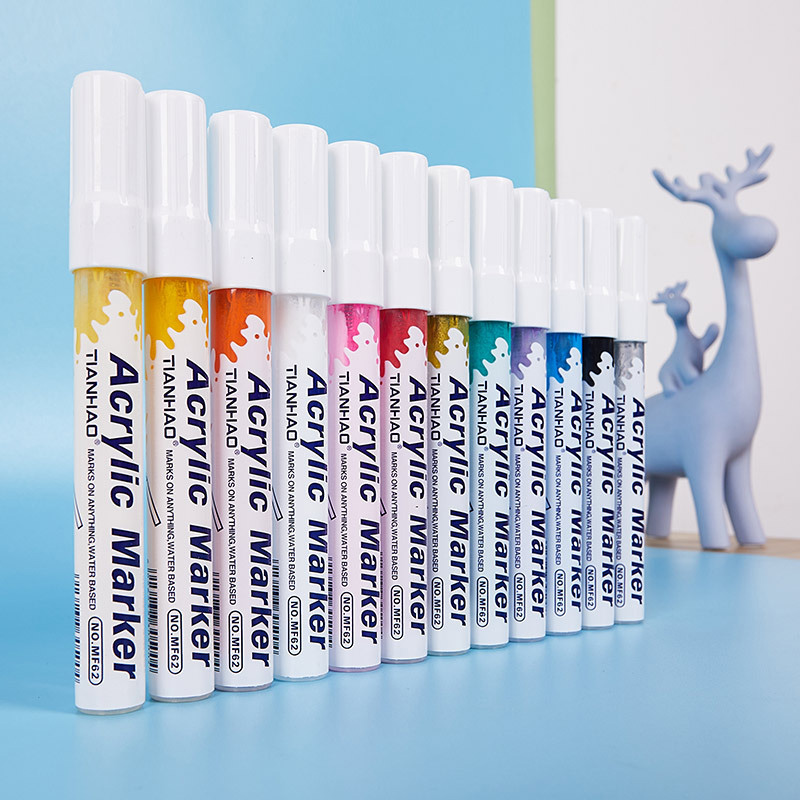When parents see the dazzling display of a High Multicolor Marker Pen set on a store shelf, the question that usually flashes across their minds is not about price or vibrancy—it is about safety. After all, little hands inevitably end up in little mouths, and the pigments that look so pretty on paper can quickly become a source of worry if they contain toxic solvents or heavy-metal pigments. So, is the High Multicolor Marker Pen truly safe for kids? The short answer is yes—provided you know what to look for before you buy and how to use the markers once you bring them home.
Begin with the barrel. Reputable brands mold their High Multicolor Marker Pen casings from polypropylene or other BPA-free plastics. This polymer is tough enough to resist cracking when the inevitable drop or stomp occurs, yet it does not leach bisphenol compounds that can disrupt young hormones. Check the clip or end-cap for a recycling symbol; numbers 5 or 2 indicate safer resin grades. Avoid any set that smells strongly of solvent when you uncap it in the store aisle; that odor usually signals the presence of xylene or toluene, chemicals you do not want circulating in a playroom.
Next, examine the ink formulation. Water-based dye inks are the gold standard for children’s use. They suspend colorant in water rather than in alcohol, so if a toddler decides to taste-test a turquoise tip, the worst result is a blue tongue, not chemical burns or dizziness. Look for compliance statements such as “ASTM D-4236” and “EN 71-3” on the packaging. These certifications confirm that a toxicologist has reviewed the formula and that heavy-metal content—lead, cadmium, mercury—falls far below parts-per-million thresholds that regulators consider safe for children under fourteen.

The tip itself deserves scrutiny. Fiber nibs on a High Multicolor Marker Pen can be either bullet or chisel shaped. For preschoolers, a 5 mm bullet tip is ideal: sturdy enough to withstand banging, yet fine enough to encourage tripod-grip development. Many manufacturers now lock the tip into the barrel with a small plastic collar so that curious pincers cannot yank it out and create a choking hazard. Turn the marker upside down and give it a gentle tug; if the nib stays put, it passes the test.
Storage and supervision complete the safety circle. Even the safest High Multicolor Marker Pen can stain upholstery or tiny teeth if it is left uncapped. Teach children to click the cap until they hear the snap; this prevents the marker from drying out and reduces the temptation to chew the porous tip. Store the set horizontally in a shallow drawer or a labeled pencil case so that darker shades do not seep into lighter ones through gravity. Finally, sit with your child for the few sessions. Modeling gentle strokes and reminding them that “markers are for paper, not for skin” turns safety guidelines into lifelong habits.
In short, a High Multicolor Marker Pen can be both a rainbow-brilliant art tool and a parent-approved plaything. Verify non-toxic certifications, choose water-based inks, and enforce sensible storage rules. Do that, and the only thing left to worry about is finding enough refrigerator space for the masterpieces.